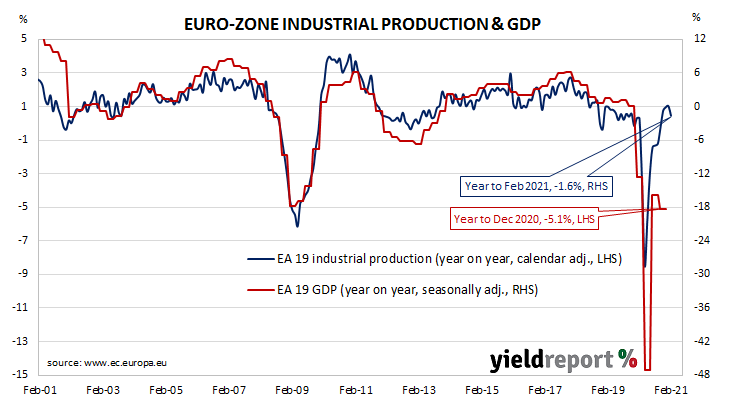Summary: Euro-zone industrial production drops in February; contraction less than expected; annual growth rate back below zero; French, German car production particularly weak; expansion in only one of euro-zone’s four largest economies.
Following a recession in 2009/2010 and the debt-crisis which flowed from it, euro-zone industrial production recovered and then reached a peak four years later in early 2016. Growth rates then fluctuated through 2016/2017 before beginning a steady and persistent slowdown from the start of 2018. That decline was transformed into a plunge in March and April of 2020 but subsequent months in 2020 produced an almost-complete recovery.
According to the latest figures released by Eurostat, euro-zone industrial production dropped by 1.0% in February on a seasonally-adjusted and calendar-adjusted basis. The contraction was smaller than the 1.3% contraction which had been generally expected but in contrast with January’s 0.8% expansion. On an annual basis, the calendar-adjusted growth rate fell from January’s rate of +0.1% to -1.6%.
“The weakness reflected large falls seen in France and Germany that month as car production was particularly weak owing to supply chain disruptions for semiconductors,” said ANZ analyst Rahul Khare. However, he noted March purchasing managers indices had pointed “to a strong bounce back in production” and thus “weakness is likely to prove temporary.”

German and French 10-year sovereign bond yields moved higher on the day. By the close of business, German and French 10-year yields had each gained 3bps to -0.26% and 0.00% respectively.
Industrial production growth expanded in only one of the euro-zone’s four largest economies. Germany’s production contracted by 1.8% while the comparable figures for France, Italy and Spain were -4.8%, +0.2% and zero respectively.

